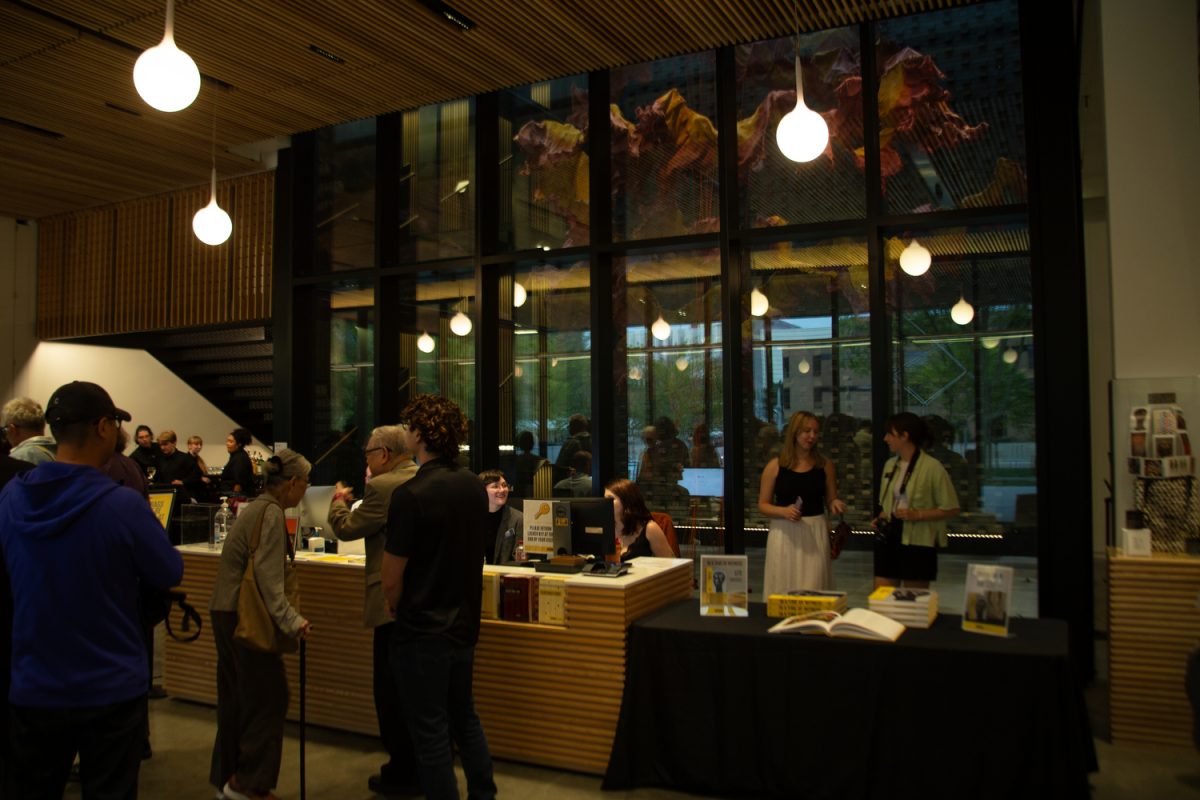Dozens of individuals attended a launch event held in the lobby of the University of Iowa Stanley Museum of Art on Friday for the release of “In a Time of Witness,” the museum’s newest and boldest catalog of art and literature, featuring the creative work of award-winning local authors.
The catalog brought together 26 graduate writers from the Iowa Writers’ Workshop and the International Writers’ Workshop to interpret objects in the museum’s collections. The catalog serves as a bridge between the two artistic expressions.
The book was a risky project even in its conception, said DK Nnuro, catalog editor and curator of special projects at the Stanley, because of the decision to place the task of art interpretation — traditionally done exclusively by art historians — in the hands of writers.
The book was conceptualized in a collaborative effort between Nnuro and the museum’s director, Lauren Lessing, because of a shared desire to make room for writers in conversations surrounding art interpretation.
“This book, more than anything we have done at the Stanley, is the embodiment of this institution,” Nnuro said.
Lessing said she initially saw the book as a smaller project, potentially even just a magazine clipping. But upon her introduction to Nnuro who, as Lessing recounted, came to the museum eager to explore visual arts through his writing, she realized that the project would require a bigger platform.
“The way that art is discussed and presented in art museums has always been very controlled by art historians,” she shared. “But we are at a moment in which we need to welcome other voices because we want to create pathways into the museum for a broader group of people.”
Contributor to the project and Iowa Writers’ Workshop graduate De’Shawn Charles Winslow wrote his interpretation of artist Sam Gilliam’s painting “Red April.” Winslow said he was initially unsure of how to write an interpretation of the art from scratch.
Eventually, he decided to repurpose one of his existing works.
“I had to figure out how to connect this art piece about civil rights and violence to my story about a man who is learning that his son is gay,” Winslow said.
After studying the pictures of the piece, Winslow found a connection between themes in his work and Gilliam’s use of the color red.
“Often, especially in the south, when parents find out that their kids are gay, they ‘see red,’” Winslow said, chuckling. “While I don’t have any experience with painting, I have heard of painters who will start a piece, leave it undone, and then a year later, they destroy it and say, ‘Now I know what it means.’ Now I know what my piece means, and I just needed a painting — I needed that red.”
The launch event concluded at 8 p.m. and will be followed by contributor readings and a meet-and-greet on Sept. 23.



